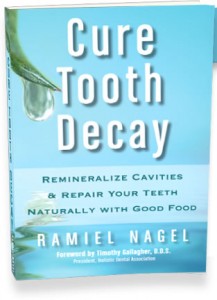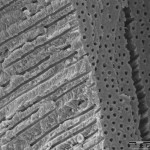
Dentinal Fluid Bring Nutrients and Immunity to Your Teeth.
Three of them are about eliminating blood sugar spikes.
When blood sugar levels spike, your resistance to decay drops because your dentinal fluid flow decreases, stops, or even reverses. In addition to saliva your dentinal fluid is what brings nutrients and immunity to your teeth!
- Eliminating refined foods.
Start with white flour and any refined sugar. Then move as close to a whole foods diet as possible
- Eliminate high-glycemic foods.
These are foods with carbs that get into your bloodstream fast. Most refined foods are high-glycemic, but some whole foods are too (melons, for instance). Try substituting low glycemic foods like lentils for higher glycemic foods such as bread or pasta. Additionally, the whole food is always lower glycemic than the refined food (whole oats vs. oat flour). http://www.glycemicindex.com/
- Eliminate stimulants.
When you have a stimulant like caffeine, your body creates its own blood sugar if it doesn’t have any handy. It converts glycogen (stored sugar) to available blood sugar.
The fourth is to get sufficient fat-soluble vitamins: A, D, E, and K.
These help with mineral uptake and regulation. Correct doses can’t be assessed without lab work, but to keep it simple I recommend (A) taking a teaspoon of cod liver oil, morning and night and (B) using butter from cows raised on green grass. Kerrygold is an example. And I recommend Carlson’s lemon flavored cod liver oil. I prefer cod liver oil to supplements because everyone’s conversion rates of beta carotene to true Vitamin A vary so widely.
Of course brush and floss multiple times daily. And if you want to make your mouth less acidic, try brushing with baking soda or swishing with a solution of it (baking soda, water and xylitol). You can click here get my recipe for a pH lowering and antiseptic natural mouth rinse.
Is this a bullet-proof solution? No. But try it for a year, and I’ll bet you your teeth will be happier.
Dentinal Fluid Transport by Ralph Steinman, DDS, MS and John Leonora PhD. Loma Linda University School of Dentistry.
 I have spent a lot of time researching and thinking about dental recalcification, so I was drawn to this book Heal Tooth Decay by Ramiel Nagel. Here are my thoughts on Nagel’s influential and informative book. The short of it: the book tells the truth as the author’s encountered it. Does its advice work for some? Yes. It doesn’t work for everyone though. I want it to, but it doesn’t.
I have spent a lot of time researching and thinking about dental recalcification, so I was drawn to this book Heal Tooth Decay by Ramiel Nagel. Here are my thoughts on Nagel’s influential and informative book. The short of it: the book tells the truth as the author’s encountered it. Does its advice work for some? Yes. It doesn’t work for everyone though. I want it to, but it doesn’t.





